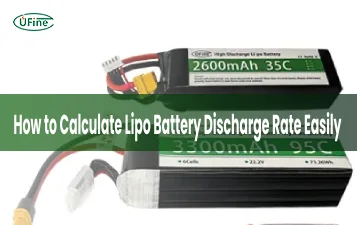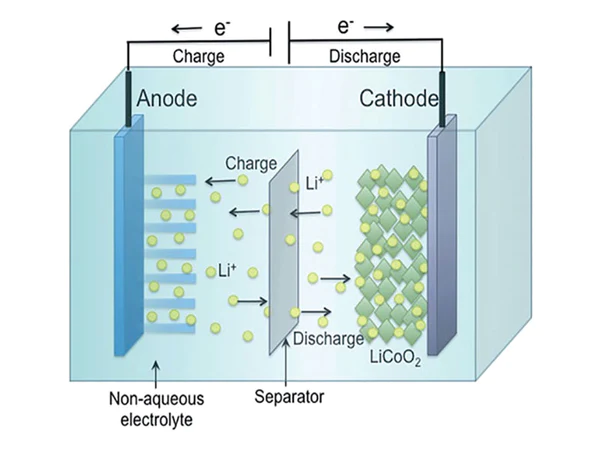Lithium batteries have revolutionized modern technology, powering many devices, from smartphones and laptops to electric vehicles and renewable energy systems. Their lightweight, high energy density and rechargeable nature make them indispensable in today’s tech-driven world. This article explores lithium batteries’ fundamental components, shedding light on their inner workings.
Part 1. The basic components of lithium batteries
Anode Material
The anode, a fundamental element within lithium batteries, plays a pivotal role in the cyclic storage and release of lithium ions, a process vital during the charge and discharge phases. Often constructed from graphite or other carbon-based materials, the anode’s selection is grounded in its remarkable capacity to accommodate and release lithium ions readily. This innate characteristic is pivotal in maintaining high capacity and stability across multiple charging and discharging cycles, thereby significantly impacting the performance and reliability of lithium batteries.
Graphite
It stands out as a dominant choice for anode material due to its exceptional structural properties. The layered arrangement of carbon atoms in graphite offers an ideal environment for lithium ions to intercalate and de-intercalate during the battery’s operation. This intercalation process involves inserting and removing lithium ions between the graphene layers of graphite, enabling energy storage and release as the battery charges and discharges, respectively.
Graphite’s effectiveness as an anode material lies in its ability to maintain stable and reversible intercalation of lithium ions within its layered structure. This characteristic is crucial in preserving the integrity of the anode, preventing irreversible structural changes even after multiple charging cycles. Consequently, this stability ensures the battery’s reliability and longevity, making graphite a cornerstone in lithium battery performance optimization.
Cathode Material
The cathode material varies depending on the specific type of lithium compound utilized in the battery. For instance, Lithium Cobalt Oxide (LCO), Lithium Iron Phosphate (LFP), and Lithium Manganese Oxide (LMO) represent a few commonly used compounds in cathode production. Each variant offers distinct advantages regarding energy density, stability, and safety.
|
Lithium Compound |
Cathode Material |
|
Lithium Cobalt Oxide |
LCO |
|
Lithium Iron Phosphate |
LFP |
|
Lithium Manganese Oxide |
LMO |
Lithium Cobalt Oxide (LCO)
LCO, known for its high energy density, has been a prevalent choice for cathode materials in early lithium-ion batteries. It boasts a remarkable storage capacity, making it suitable for applications where compactness and high energy output are primary concerns, such as in consumer electronics like smartphones and laptops. However, LCO’s thermal stability and safety profile can be less favorable than other cathode materials, particularly at high charge levels.
Lithium Iron Phosphate (LFP)
LFP offers an excellent compromise between performance and safety. Its structural stability and robustness make it less prone to thermal runaway or overcharging incidents, enhancing the overall safety of the battery. While LFP may have a slightly lower energy density than other compounds, its resilience and safety characteristics have made it a preferred choice for safety applications, such as power tools and electric vehicles.
Lithium Manganese Oxide (LMO)
LMO, characterized by its stability and cost-effectiveness, finds application in various consumer electronics. It exhibits good thermal stability and safety attributes, making it suitable for applications that balance performance and cost-effectiveness. However, it generally has a lower energy density than other cathode materials.
Electrolyte
The electrolyte is a vital conduit for transferring lithium ions between the anode and cathode within lithium batteries. Generally, the electrolyte comprises lithium salts dissolved in organic solvents, forming a conductive medium essential for the battery’s operation. Its primary function is to facilitate the movement of lithium ions between the electrodes, enabling the flow of electricity during the charge and discharge processes.
Battery manufacturers often consider various factors, such as the choice of solvents, lithium salts, and additives, to optimize the electrolyte’s conductivity, thermal stability, and resistance to degradation over multiple charge and discharge cycles.
Separator
A separator, often a porous membrane, serves as a physical barrier between the anode and cathode, preventing electrical contact while allowing the passage of lithium ions. It enhances the safety and efficiency of the battery by preventing short circuits and maintaining the integrity of the internal structure.
Part 2. The battery casing
External Casing
The external casing of a battery serves as its protective housing, safeguarding the internal components from external elements and providing structural integrity. Typically, battery casings are constructed from stainless steel, aluminum alloys, or specialized plastics. These materials are chosen for their durability, lightweight nature, and corrosion or physical damage resistance. The casing’s robustness ensures the safe containment of the internal components, shielding them from impacts or environmental factors.
Label and Information
Battery casings also host essential labels and markings, providing crucial information about the battery. These labels contain the battery’s voltage, capacity, chemistry, manufacturing date, and safety certifications. These details are vital for consumers, manufacturers, and regulators as they denote compatibility, usage instructions, and safety precautions. Additionally, warning symbols or pictograms may caution users about potential hazards or specific handling instructions.
Cell Configuration
Battery cells are the fundamental units within a battery pack. These cells are typically arranged in various configurations, often linked to achieve the desired voltage and capacity. Standard configurations include cylindrical, prismatic, and pouch cells. Cylindrical cells, like those used in many consumer electronics, have a tubular shape, while prismatic cells are rectangular. Pouch cells, more flexible and used in thin devices, are enclosed in a soft, flat package. The arrangement of these cells determines the battery pack’s overall performance and physical form factor.
Part 3. FAQs
-
What is the main ingredient in lithium batteries?
The main ingredient in lithium batteries is, unsurprisingly, lithium. This element serves as the active material in the battery’s electrodes, enabling the movement of ions to produce electrical energy. -
What metals makeup lithium batteries?
Lithium batteries primarily consist of lithium, commonly paired with other metals such as cobalt, manganese, nickel, and iron in various combinations to form the cathode and anode. -
What is the biggest problem with lithium batteries?
One of the significant concerns with lithium batteries is their potential for thermal runaway, leading to overheating, fires, or explosions if they are damaged, punctured, overcharged, or exposed to extreme conditions. -
What is the safest type of battery?
Among rechargeable batteries, lithium iron phosphate (LiFePO4) batteries are often considered one of the safest due to their stable chemistry, lower risk of thermal runaway, and resistance to overheating compared to other lithium-ion chemistries. -
What is the lifespan of a lithium-ion battery?
A typical lithium-ion battery can last around 2 to 3 years or undergo approximately 300 to 500 charge cycles before experiencing significant capacity loss. However, the lifespan can vary based on usage, maintenance, and environmental factors.
Related Tags:
More Articles

LiPo Battery Discharge Rate Guide & Calculation Tips
Understand LiPo battery discharge rates, C-ratings, and how to calculate max current. Essential guide for RC, drones, and electronics users.
High‑Capacity 3S LiPo Batteries: 5000 mAh vs. 10000 mAh
Compare 3S LiPo 5000mAh vs 10000mAh batteries by weight, power, and use. Find the best fit for your drone, RC car, or boat setup.
Top 5 Applications for Small 3S LiPo Batteries
Small 3S LiPo batteries power drones, RC gear, wearables, and robotics with high energy and low weight. Making them ideal for compact electronics projects.
Building and Charging Your Own 3S LiPo Pack: A Step‑by‑Step Guide
Learn how to build, balance, and charge a 3S LiPo battery pack safely at home with this complete DIY guide for hobbyists and beginners.
How to Choose the Right LiPo Battery Plug Type?
Discover the best LiPo battery plug types, how to choose them, and expert tips for safe usage, soldering, and maintenance.




